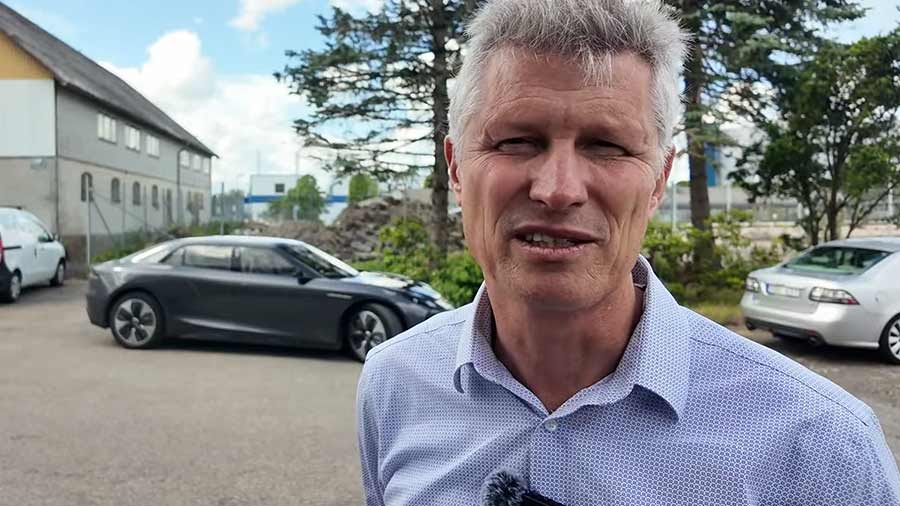Table of Contents
A Turning Point for Swedish Electric Vehicles
The electric vehicle (EV) market is saturated with options, but none stand out quite like the NEVS Emily GT. Developed in Europe and carrying the legacy of Swedish automotive innovation, this vehicle is positioned to break new ground. Peter Dahl, the project manager at NEVS, provides a unique insider perspective on why this car could redefine the market, despite the setbacks with EV Electra and the rollercoaster journey it has faced so far.
In an exclusive interview with Alrik Söderlind, Dahl makes a strong case for the Emily GT’s production potential. He highlights its European engineering roots, superb drivability, and emotional appeal—elements that could make it a standout contender in a crowded market. But what will it take for the Emily GT to go from prototype to production?
NEVS Emily GT’s Market Potential
Peter Dahl is clear about one thing: the Emily GT isn’t just another EV .Before diving into the technical details and production potential of the NEVS Emily GT, take a moment to hear directly from Peter Dahl, the man behind the project, in this insightful interview by Alrik Söderlind. Dahl shares his thoughts on why the Emily GT is unlike any other EV, and what it will take to bring it to the market. Watch the full video below for exclusive insider details:
It’s built in Europe with a strong emphasis on quality and unique features. Unlike many mass-produced EVs, the Emily GT offers exceptional interior space, nimble handling, and a fun driving experience. The use of in-wheel motors—an advanced technology—helps optimize both driving dynamics and interior room. Dahl believes these aspects give the Emily GT an edge over the competition.
But it’s not just about technical specifications. Dahl underscores Sweden’s long-standing tradition of building cars with soul—vehicles that resonate with their owners on a deeper, emotional level. The Emily GT, he argues, can tap into that heritage, providing not just a method of transportation, but a driving experience that stirs emotion.
The Challenges Ahead
Despite the promise, the road to production is fraught with challenges. NEVS has been in talks with various investors, but the failed partnership with EV Electra has been a major stumbling block. According to Dahl, working with EV Electra became an impossible task, leading to frustration across the engineering team and NEVS leadership. Yet, Dahl remains optimistic that the right buyer can still be found.
The global EV market is currently in a downward trend, particularly in China, where many believed the future of electric vehicles lay. However, Dahl argues that the market is likely to rebound as battery technology becomes more accessible and affordable. He sees a significant gap in the market for a vehicle like the Emily GT, and he believes that filling that gap could be the key to securing the necessary investment.
A Realistic Path to Production
Could the Emily GT be in production within three years? Dahl is confident. “If we start in six months, it’s absolutely realistic,” he states. Prototypes have been built to test various aspects of the vehicle, and while there are some areas for improvement, Dahl emphasizes that the foundation is solid. The focus will be on refining the emotional experience of driving the Emily GT, giving owners the ability to customize their driving dynamics, similar to tuning a smartphone or computer. Dahl explains that owners could personalize everything from the steering and suspension to torque vectoring, allowing them to create a driving experience that fits their personal preferences.
Investor Interest Grows
Dahl is cautiously optimistic about the growing interest from investors. While the electric vehicle market may have dipped recently, there is still a significant opportunity for unique, high-quality vehicles like the Emily GT. Investors are starting to see that this isn’t a mass-market car—NEVS is targeting a production volume of around 5,000 units per year, a number that fits the premium nature of the car. Priced at over one million SEK, this is a luxury vehicle aimed at discerning drivers, not just another electric car.

As Dahl explains, the business model makes sense. Investors see the potential to produce, sell, and recoup their investment within a reasonable timeframe, despite the hefty upfront costs. However, it’s critical that the right investors come forward soon. NEVS has been in discussions for over a year, and while interest is high, there’s a time limit on how long they can keep pushing without securing a deal.
What’s Next for NEVS and the Emily GT?
The future of the NEVS Emily GT hangs in the balance, but Dahl remains hopeful. He feels the vehicle has everything it needs to be a success—engineering excellence, market potential, and emotional appeal. What it needs now is the right investor to help bring it to life. In Dahl’s words, “It’s 100% possible” that in three years, the Emily GT will be on the road, turning heads and reshaping the EV landscape.
But time is of the essence. As NEVS continues talks with potential investors, the pressure mounts to finalize a deal. For now, the Emily GT remains a promising prototype with the potential to redefine what a premium European electric car can be.











